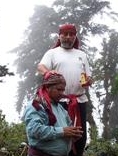
Mayan Ajq’ij Carlos Barrios talks with Joshua Samuelson about his first contact with the Mayan tradition, the meaning of Ajq’ij, his teachers and the dangers and climate in Guatemala during the civil war. We are greatful to Joshua for authoring and sharing this article.
Carlos, what is an Ajq’ij?
Ajq means lord and ‘ij the sun. The Lord of the Sun. Sounds great huh? But it’s just a simple man working with the energies in the tradition of the ancient people.
When was your first contact with a Mayan priest?
The Mayan culture had always interested me and I studied their culture at school and by myself. Some history people told me that the Mayans disappeared and the present day indigenous people are just a not what the Mayans are just a degenerative version of what they used to be. At University, there was an opportunity to go to a small town called Todos Santos to work with a famous sociologist called Dr Nelson Alan. One morning I got up at 5.30, and I went for a walk in the mist. On this walk I saw a mysterious light and I walked through the mist to it. Once I got there I saw it was indigenous people who had created this fire and were putting these candles in the front of a type of altar, called a stella, a stone inscribed with the characters of the Mayan rite and the figure of a monkey. I saw a man and said good morning to him. He turned to look at me and then turned back and continued to make his prayers. At this moment I smiled and I said, “Why are you making your prayer to this stone, don’t you know there is only one God in the Mayan world, why a praying to this stone, this is primitive!” Again he turned to look at me and look deep into me, and he said, “Oh, you are with these people who came with the University, and you are the ones with the knowledge. It is such a pleasure to meet you. Good morning, my name is Pascual and I’m just a poor Indian. Would you do me the honor of telling me your name?” I felt stupid and replied, “I’m sorry I didn’t mean to be rude, my name is Carlos, and I came with the group from the university. My intention was not to disturb your prayers. I just wanted to ask why if you have a principal god why you are making a ceremony to this stone. He smiled and he said, “This stone that you see here is the representation of the Great Father, and this stone has the energy of the Great Father and when I make a prayer the presence of the Great Father is here. Do you have a picture of your mother?” “Yes.” “Could you show me please?” So I showed him the picture and he said, “Is this your mother?” “Yes, it’s my mother.” “Are you sure?” “Yes, of course” and he said, “No stupid man, this is a picture of your mother.” When you see this picture there is a feeling there, a connection, and that is the same thing that happens here. Here in this stone is the energy of the Great Father, of the Great Spirit, and you can be sure that he will protect our crops and us. I have this year the best crops I have in my entire life. I have extra money and I am so happy and I come here to say thanks to God. And I said, “Yes you are right, I?m going to leave and let you continue making your prayers.” He said, “Come back here, take these candles and talk into them and put them in the fire. You can’t come to the fire and leave like an animal. Say thanks to the representation of the divinity.” And so I took the candles and I prayed that we remain safe in that place, because at that moment there was unrest in the area, with guerillas etc. The next day I went back to the work we were doing with the sociologist, but in the next days I became more curious about this man I had met; I was impressed by his eyes. When he looked at me, he saw deep inside me, and I felt that this man knew me, more than I knew myself. I tried to find him again, and I forgot his name. I searched and searched but all the faces of the indigenous people looked the same to me in the marketplace and I thought, “How am I going to find this man.” But I felt that if I could find him, something important would happen. One month later, a young indigenous came to me and said, “Don Pasqual invites you to have dinner at his home.” When I went to his house we began to talk and then he took my hand and he looked for my pulse and closed his eyes for a few minutes then he began to tell me the history of my life. Events that I forgot, promises I made and never fulfilled. It was a complete history of my life, and I was very impressed. I asked him how he did that and said, “In your blood is the memory of your life, and your blood talked to me and I just repeated what it said to me.” “Why are you doing this for me”, I asked and he replied, “Because you have a big problem. When you were young you had the gift of divination, and you asked spirit to cut this gift from you, and now you are trying to recover this gift, to be a visionary. That’s the reason I called for you. I can invite you to work with us, in my tradition, and I can teach you. I don’t promise you will recover your vision, but you will learn a lot of things.”
During these times traveling was difficult. I went when I could and studied with him. I was the only disciple who wasn’t indigenous, and the others saw me as stupid, and as interrupting the group. They made me feel alone. I thought, well this is the price we non-indigenous people have to pay if we want to have access to this knowledge. I was impressed by the power that this man had but I knew nothing of the tradition. Don Pasqual was the leader of one of the most ancient clans, the Clan of the Eagles. The problems with the guerrillas made it hard to travel. The Army viewed sociologists and anthropologists as military objectives as since they believed they were putting bad ideas in the heads of the indigenous people. So I couldn’t go there for five years, but we would still find ways to meet up for him to teach me. When it came time for me to walk the Mayan path to become an Ajq’ij, Don Pasqual said, “Carlos, you can’t continue with me”, and I said, “Why not! I am ready. You are my Elder, you are my teacher.””No it’s impossible for you to continue with me, because you need to walk the path for one year and then work for me for 9 months.” “That not a problem, because if I am close to you I’m going to learn a lot” I replied. This is not the problem, the problem is that during this time you need to take a vow of abstinence.” And I replied, “that’s not a problem, I don’t eat meat, I am a vegetarian, and I can fast for 10 to 14 days with only water.” “No, the abstinence I’m talking of is a vow of sexual abstinence, and you can’t do it?”(laughs) “Of course I can’t do it.” So he sent me to Elder in another more flexible tradition that didn’t have these restrictions. But he taught me to work with the wind, the mist and the water, and how to bring rain (and it work with good success I suppose (rained in SF that day)). It seems that now the clouds and the rain follow me.
Was it a different clan that you went to, after Don Pasqual?In these times about 30 or so years ago, there were the clans of the jaguars, eagles, bees, and bats. But now with the evangelical and fundamentalist Christians, globalization, many clans have been destroyed. In the 50’s, McCarthy made a plan for Latin America, designed to make the indigenous people into consumers. Part of the plan involved destroying indigenous traditions by giving money to different evangelical churches that then sent ministers to Latin America and especially Bolivia, Ecuador, Guatemala, Colombia and Peru to convert the indigenous people to Christianity. The CIA sold weapons to our governments, paid off the generals, and fostered corruption. They also gave out a lot of loans. We were not a poor country before these events. Nobody used to be interested in the dollar before, because one dollar was only worth ninety cents of our currency. Our economy was destroyed during the Cold War. Guerillas and the Army would set up camp on different sides of the most traditional Mayan villages. The first step was to kill all the Elders of the village so that the village was left without leaders. The guerillas would go into town asking for food, and of course if you have a weapon and you ask for food you get it. The next day the Army would come and say, “Who was the bastard that gave the guerillas food?” They would take these people and they would kill them, and then they’d ask for food for themselves. The next day the guerillas would come into town saying, “Who was the bastard who gave the Army food”, and so on. It was a game; the guerillas and the Army would never have confrontations. Then the fundamentalist priests from the Evangelical church North America would step into the picture. They were in on this whole game. They would make badges that say that a person is a member of the Evangelical church. The guerillas and the Army didn’t torture or kill these people. Of course, the people in the village see, “Oh if I have one of these cards and go to church and clap for two hours they won?t kill me.” This caused many indigenous people to accept Jesus, and this how things changed. They killed many of the Mayan elders and destroyed much of the tradition. There were some Elders who kept their mouths shut and survived, but people were scared to talk to them. It was too dangerous. This is how many of the big Mayan clans were destroyed. Only now is some of the tradition and knowledge coming back. However a lot of the tradition was lost. The Elders who did survive were often in the deeper part of the country, and they preserved the traditions. Now the Elders want to share this knowledge with all humanity because this is time for unity in the human race. All those walking in the path of light need to be united. We need to work together because otherwise humanity may destroy itself. The Mayan prophecies about the Dec 21 of the year 2012 don’t necessarily mean the world is going to end. It says that the kind of life we live, the economy and the society is going to change to a new type of humanity. Humanity with more conscience, more respect for the Mother Earth. This doesn’t happen instantly. This is going to take time. We hope that around the time of 2046 that there will be a new vision in place. At this moment we, as Mayans believe that a lot of humanity is going to disappear during this shift.
At this moment in time, what are the most important teachings the Mayan world can offer us?There is a lot of interest in ancient cultures and spiritual traditions. It is important that people go deeply into these traditions. Many of these traditions, philosophies and ways of life are similar because they came from ancient mother honoring traditions, which in the Mayan world call Tula culture. Many people think their religion, their tradition or their project is the one truth, the only truth, when it is a just a part of the Universe, a part of a great truth. This is one of the most important messages of unity. They are all different manifestations of the same great truth. The problem is that many of these traditions are fighting. The leaders of these different ways need to go to deeper into their traditions and focus on humility and harmony. The Mayan tradition focuses on harmony, with ourselves, with our neighbors, and with the Mother Earth. We in the light need to come to a union against the darker forces. At this time the balance is with the other side, they are destroying the Mother Earth; they are making wars and propagating consumerism. We need a balance. A few people have millions of dollars and then millions are dying because they have nothing to eat. We need to respect each other as humans so we can in turn respect the animals, the trees and Mother Earth. This is the call of the Mayan elders. It is a simple message.
What’s your part in this mission?When I was a kid I had a dream. I saw many people from different nations, Native American nations, with feathers and pipes. When I got a little older I told my father what I saw. He showed me some pictures of Tikal, and I said, “Yes, this is the place.” Then I knew my purpose of life, my mission was to be vehicle of the knowledge of the Elders. When we had a gathering of the Elders in December of 1995, and at that moment I thought, “I have finished my mission for this life and I’m going to go to the lake, and I’m going to write and heal people and do divination and I’m going to be so happy.” But the Elders had other plans, they sent me out to the world because they think I understand Western Civilization, and the indigenous people, and they sent me out to be a spokesman for the tradition. Each of the Ajq’ij has a specialty, some of them are healers, and others can cut the bad energies, are diviners or work with the sacred calendar. My specialty is to work with the sacred calendar, the Tzolkin. The Tzolkin is a very good tool for understanding our own energies in relation to other energies around us. The elders feel this is a crucial time, if we don’t change our ways and respect our environment and Mother Earth we will destroy ourselves. We are living in the times that many prophets from different cultures have talked about with all the sickness, earthquakes, floods, drought, global warming and holes in the ozone. The Elders are trying to show people that it is time to change our ways, respect Mother Earth and the each other’s traditions. In the richer countries we see the faces of many people and they are empty and unhappy because they just a number, a card, a machine, and they don’t use the experience of the Elders. The Elders get put into a nursing home. This is big mistake because these people have a lot of experience and knowledge. The famous American dream is turning into a nightmare. This is why the eyes of humanity are looking to the ancient cultures to teach us how to preserve our world.
What else would you like to tell me about the life of a Mayan Priest?When I tell people where I went last month and I tell them Colombia, Paris or Italy, they say, “What a nice life you have!” They think that travel is happiness, but the life of a shaman is tiring, we are always in the role of service for humanity. We invest a lot of time and energy and there are moments when we feel tired, empty. We don’t have time to go sightseeing. We just go to a place and work and work. There are a lot of people who are angry with us because we are coming to awaken the people. But this is part of my destiny and I accept it. The best life for a Mayan priest is one where the priest lives in his/her community and heals people. I would love to do this, but my destiny is to travel and travel and travel. On the positive side we get to share with people and help people.
Who else, apart from Don Pasqual, taught you the ways of a Mayan priest?Don Pasqual is an Elder who really taught me and who helped me to develop my power. There was another important Elder who taught me called Don Isidro. He was really different than Don Pasqual because he was an academic man with a doctorate in international laws. He spoke 14 different languages. His house was a labyrinth of books and if you picked up a book and looked in it you would find notes relating to other books in the house.
 Ixkotzij (flower woman) and her sister went with their mother to visit their grandfather, Kawoq. They visited him every 13 days, since he lived far away. The two sisters were very excited to see him. He was often smiling, as he liked to tease them, and he always answered all the questions the girls asked, even the most difficult ones. From moment they left the house, Ixkotzij began thinking of a difficult question to ask her grandfather. He taught them no to be content with an “I don’t know, just because, who knows”; or that type of answer. He said everything had a reason and they were entitled to know it.
Ixkotzij (flower woman) and her sister went with their mother to visit their grandfather, Kawoq. They visited him every 13 days, since he lived far away. The two sisters were very excited to see him. He was often smiling, as he liked to tease them, and he always answered all the questions the girls asked, even the most difficult ones. From moment they left the house, Ixkotzij began thinking of a difficult question to ask her grandfather. He taught them no to be content with an “I don’t know, just because, who knows”; or that type of answer. He said everything had a reason and they were entitled to know it.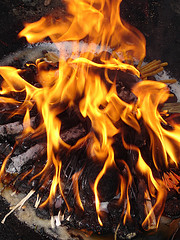

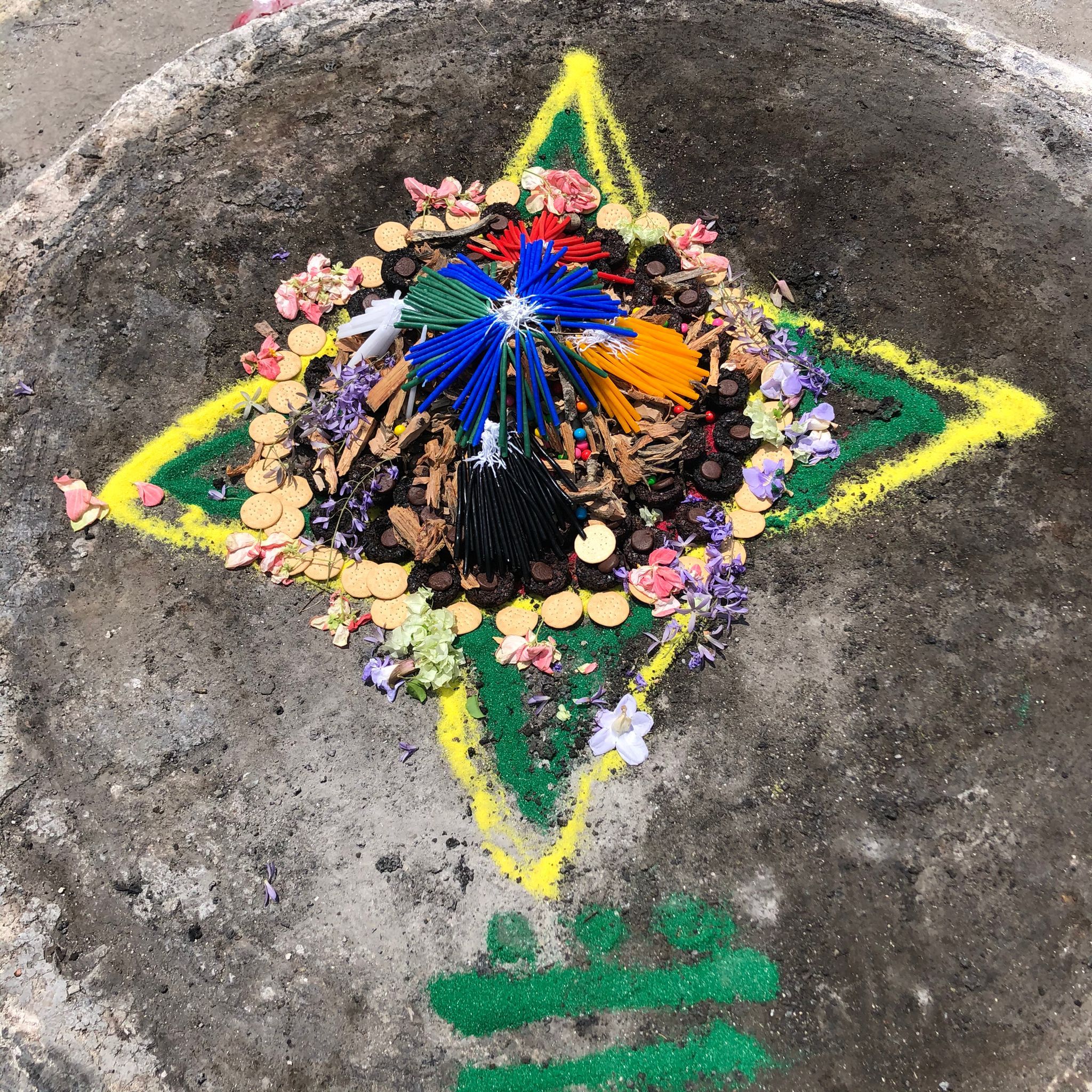

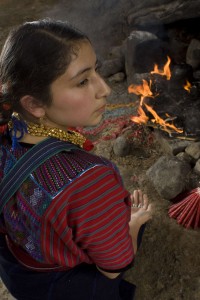 In order to keep the long-standing tradition, Ixkab’ (woman of honey) finishes the third and final cloth used to make a huipil (blouse) for her youngest daughter. Her heart is joyful, she has woven all the necessary cloths to make her husband’s, daughter’s and her own clothing. Early in the morning she will give her beloved husband all the cloths so he can begin putting them together to maintain the complement of energies. He will sit in their house, at the corridor, for 20 days with a basket full of threads to sew the huipiles, cortes (skirts), trousers and shirts, and he will have them ready before theHab’ (the New Year) so that the whole family will wear new clothes.
In order to keep the long-standing tradition, Ixkab’ (woman of honey) finishes the third and final cloth used to make a huipil (blouse) for her youngest daughter. Her heart is joyful, she has woven all the necessary cloths to make her husband’s, daughter’s and her own clothing. Early in the morning she will give her beloved husband all the cloths so he can begin putting them together to maintain the complement of energies. He will sit in their house, at the corridor, for 20 days with a basket full of threads to sew the huipiles, cortes (skirts), trousers and shirts, and he will have them ready before theHab’ (the New Year) so that the whole family will wear new clothes.
 Today, I have been contemplating life and the good fortune of being which we have been gifted. Why is it we exist? It is because existing has given us the awareness of our being and the ability to say we are alive and cognizant. Our consciousness is the alignment and harmonization of our physical, mental, emotional, and spiritual being along with the confounded presence of reason, trying to fulfill all the empty spaces of life. All this while accepting the integrity within our soul and joining through the force of the real essence, which has been designated “spirit”. You simply have to feel it as a light, with the magical essence representing that which joins us to everything, to the original vibration, where the creation that leads to reality emerges.
Today, I have been contemplating life and the good fortune of being which we have been gifted. Why is it we exist? It is because existing has given us the awareness of our being and the ability to say we are alive and cognizant. Our consciousness is the alignment and harmonization of our physical, mental, emotional, and spiritual being along with the confounded presence of reason, trying to fulfill all the empty spaces of life. All this while accepting the integrity within our soul and joining through the force of the real essence, which has been designated “spirit”. You simply have to feel it as a light, with the magical essence representing that which joins us to everything, to the original vibration, where the creation that leads to reality emerges.
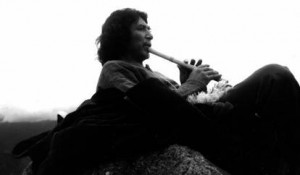

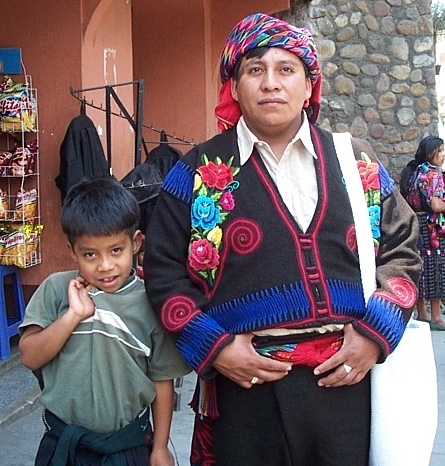
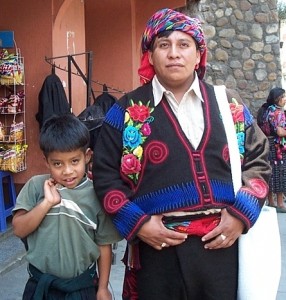 Manuel Pan Ju Lux is a Mayan Ajq’ij, or priest that comes from the village of Chichicastenango in Guatemala. Saq’ Be’ sat with Manuel while he spoke of his life and struggles upon his path that led him to becom an Ajq’ij and member of the Cofradia.
Manuel Pan Ju Lux is a Mayan Ajq’ij, or priest that comes from the village of Chichicastenango in Guatemala. Saq’ Be’ sat with Manuel while he spoke of his life and struggles upon his path that led him to becom an Ajq’ij and member of the Cofradia.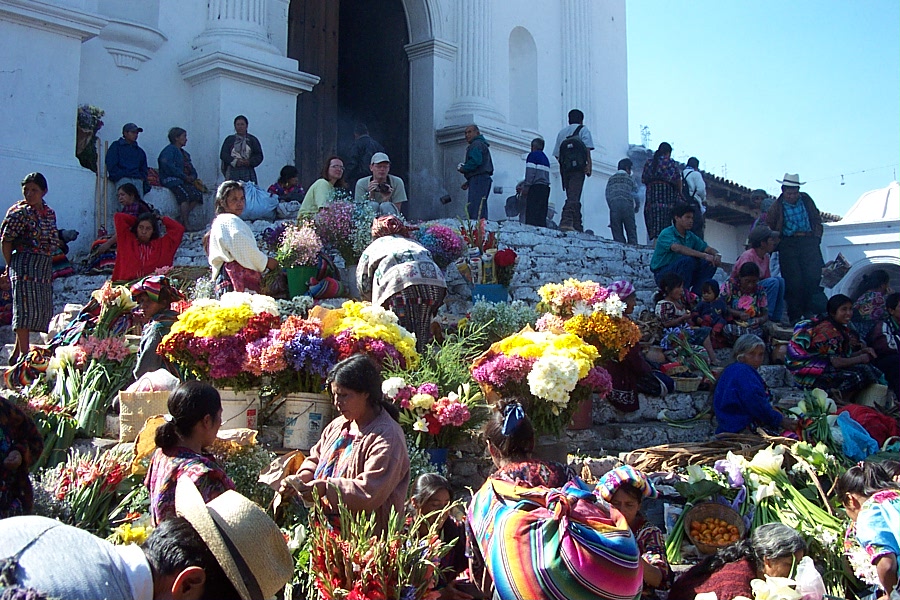
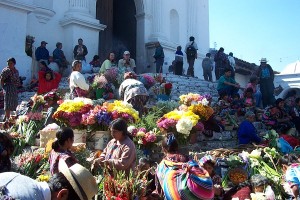 The church bell is more than 500 years old and is made of gold. The Church of Santo Thomas is different from others in Guatemala. There are twenty steps that lead to the entrance of the church. The twenty steps signify the twenty days of the Mayan Calendar. Starting with the first step leading out of the church is the Ajaw (nawal/spirit/energy) Bat’z (the first of the 20 signs of the Mayan calendar) towards the last step, Ajaw Tz’i (the last of the 20 signs of the Mayan Calendar). The ancient ones left these steps here. It is a Catholic church at the same time it is a Mayan church. Why? Because before the Spanish invasion, where there is now an altar, there was a Mayan altar, where the ancestors would celebrate their ceremonies for the dead ones. In the middle of the church, where there was another altar, this one was to remember the principles of the town. At the entrance of the church was another altar to remember the entire town. It was there that the elders would perform ceremonies to ask for whatever it was they wanted. When the Spaniards came, they wanted to do away with these altars. The Ajq’ij (Mayan spiritual guides) and the principles said that this was a Mayan church as well as a Catholic church. That is why nowadays we still burn incense outside and inside the church.
The church bell is more than 500 years old and is made of gold. The Church of Santo Thomas is different from others in Guatemala. There are twenty steps that lead to the entrance of the church. The twenty steps signify the twenty days of the Mayan Calendar. Starting with the first step leading out of the church is the Ajaw (nawal/spirit/energy) Bat’z (the first of the 20 signs of the Mayan calendar) towards the last step, Ajaw Tz’i (the last of the 20 signs of the Mayan Calendar). The ancient ones left these steps here. It is a Catholic church at the same time it is a Mayan church. Why? Because before the Spanish invasion, where there is now an altar, there was a Mayan altar, where the ancestors would celebrate their ceremonies for the dead ones. In the middle of the church, where there was another altar, this one was to remember the principles of the town. At the entrance of the church was another altar to remember the entire town. It was there that the elders would perform ceremonies to ask for whatever it was they wanted. When the Spaniards came, they wanted to do away with these altars. The Ajq’ij (Mayan spiritual guides) and the principles said that this was a Mayan church as well as a Catholic church. That is why nowadays we still burn incense outside and inside the church.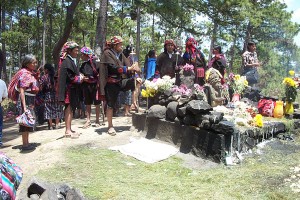 According to my elders, the people that made this church had the force. It was made by important people. When the elders began [the work] they searched for people [to build the church]. The church is made out of adobe. They started to bring the adobe to build the church, but [whenever they started to build] it would always come down on them. Some of the people would say this was happening because of a lack of ceremonies. Others would say “We’ve done ceremonies, what else is missing?” The elders would say, “You know that, in this place, where there are three altars there were the nawales (spirits) of the altars and they do not want to be removed. This is why the church can not be built.” A big, heavy man would come here with the principals saying his name was Pascual. They would say “he must have a Mayan name.”
According to my elders, the people that made this church had the force. It was made by important people. When the elders began [the work] they searched for people [to build the church]. The church is made out of adobe. They started to bring the adobe to build the church, but [whenever they started to build] it would always come down on them. Some of the people would say this was happening because of a lack of ceremonies. Others would say “We’ve done ceremonies, what else is missing?” The elders would say, “You know that, in this place, where there are three altars there were the nawales (spirits) of the altars and they do not want to be removed. This is why the church can not be built.” A big, heavy man would come here with the principals saying his name was Pascual. They would say “he must have a Mayan name.”